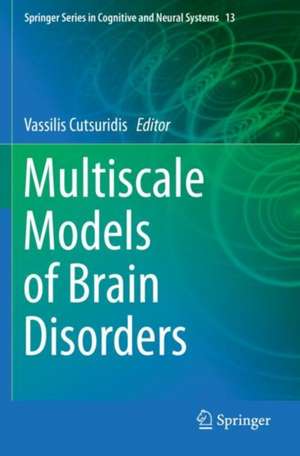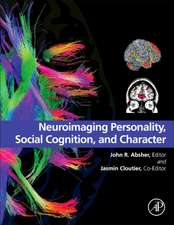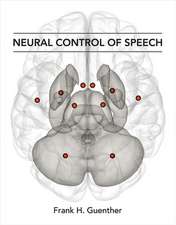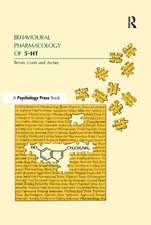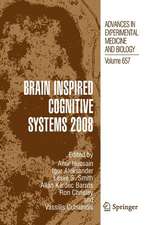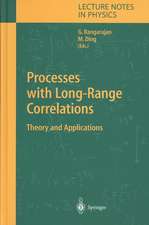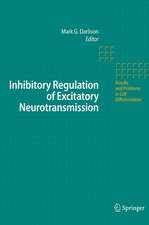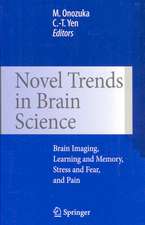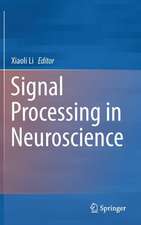Multiscale Models of Brain Disorders: Springer Series in Cognitive and Neural Systems, cartea 13
Editat de Vassilis Cutsuridisen Limba Engleză Paperback – 24 oct 2020
In recent years, there have been significant advances in the study of the dynamics of the disordered brain at both the microscopic and the macroscopic levels. This understanding can be furthered by the application of multi-scale computational models as integrative principles that may link single neuron dynamics and the dynamics of local and distant brain regions observed using human EEG, ERPs, MEG, LFPs and fMRI.
Focusing on the computational models that are used to study movement, memory and cognitive disorders as well as epilepsy and consciousness related diseases, the book brings together physiologists and anatomists investigating cortical circuits; cognitive neuroscientists studying brain dynamics and behaviorby means of EEG and functional magnetic resonance imaging (fMRI); and computational neuroscientists using neural modeling techniques to explore local and large-scale disordered brain dynamics.
Covering topics that have a significant impact on the field of medicine, neuroscience and computer science, the book appeals to a diverse group of investigators.
| Toate formatele și edițiile | Preț | Express |
|---|---|---|
| Paperback (1) | 554.60 lei 38-44 zile | |
| Springer International Publishing – 24 oct 2020 | 554.60 lei 38-44 zile | |
| Hardback (1) | 569.74 lei 38-44 zile | |
| Springer International Publishing – 24 oct 2019 | 569.74 lei 38-44 zile |
Preț: 554.60 lei
Preț vechi: 693.25 lei
-20% Nou
Puncte Express: 832
Preț estimativ în valută:
106.14€ • 110.40$ • 87.62£
106.14€ • 110.40$ • 87.62£
Carte tipărită la comandă
Livrare economică 11-17 aprilie
Preluare comenzi: 021 569.72.76
Specificații
ISBN-13: 9783030188320
ISBN-10: 3030188329
Pagini: 222
Ilustrații: XIV, 222 p. 62 illus., 52 illus. in color.
Dimensiuni: 155 x 235 mm
Ediția:1st ed. 2019
Editura: Springer International Publishing
Colecția Springer
Seria Springer Series in Cognitive and Neural Systems
Locul publicării:Cham, Switzerland
ISBN-10: 3030188329
Pagini: 222
Ilustrații: XIV, 222 p. 62 illus., 52 illus. in color.
Dimensiuni: 155 x 235 mm
Ediția:1st ed. 2019
Editura: Springer International Publishing
Colecția Springer
Seria Springer Series in Cognitive and Neural Systems
Locul publicării:Cham, Switzerland
Cuprins
Part I Movement Disorders.- A neuro-computational model of Pallidal vs. Subthalamic Deep Brain Stimulation Effect on synchronization at Tremor frequency in Parkinson’s disease, Alekhya Mandali, Srinivasa Chakravarthy V, Ahmed A. Moustafa.- Dynamics of Basal Ganglia and Thalamus in Parkinsonian Tremor, Jan Moren, Jun Igarashi, Osamu Shouno, Junichiro Yoshimoto, and Kenji Doya.- A neural mass model for abnormal beta-rebound in schizophrenia, Aine Byrne, Stephen Coombes, and Peter F Liddle.- Basal ganglio-thalamo-cortico-spino-muscular model of Parkinson’s disease bradykinesia, Vassilis Cutsuridis.- Network Models of the Basal Ganglia in Parkinson’s Disease: Advances in Deep Brain Stimulation through Model-Based Optimization, Karthik Kumaravelu1, Warren M. Grill.- Neural synchronization in Parkinson’s disease on different time-scales, Sungwoo Ahn, Choongseok Park, Leonid L. Rubchinsky.- Obsessive compulsive tendencies and action sequence complexity: An Information Theory Analysis, Mustafa Zeki, Fuat Balcı, Tutku Öztel, Ahmed A. Moustafa.- Part II Cognitive Disorders.- Cortical disinhibition, attractor dynamics and belief updating in schizophrenia, Rick A Adams.- Modelling cognitive processing of healthy controls and obsessive compulsive disorder subjects in the antisaccade task, Vassilis Cutsuridis.- Simulating cognitive deficits in Parkinson’s disease, Sébastien Hélie and Zahra Sajedinia.- Attentional deficits in Alzheimer’s disease: investigating the role of acetylcholine with computational modelling, Eirini Mavritsaki, Howard Bowman, Li Su.- A computational hypothesis on how serotonin regulates catecholamines in the pathogenesis of depressive apathy, Massimo Silvetti, Gianluca Baldassarre, Daniele Caligiore.- Autism Spectrum Disorder and deep attractors in neurodynamics, Włodzisław Duch.- Part III Memory Disorders.- Alzheimer’s disease: rhythms, local circuits and model-experiment interaction, Frances K Skinner, Alexandra Chatzikalymniou.- Using A Neurocomputational Autobiographical Memory Model to Study Memory Loss, Di Wang, Ahmed A. Moustafa, Ah-Hwee Tan, Chunyan Miao.- Part IV Epilepsy and Consciousness Related Disorders.- How can computer modeling help understanding the dynamics of absence epilepsy?, Piotr Suffczynski, Stiliyan Kalitzin, Fernando H. Lopes da Silva.- a-driven modeling of normal and pathological oscillations in the hippocampus, Ivan Raikov, Ivan Soltesz.- Shaping brain rhythms: dynamic and control-theoretic perspectives on periodic brain stimulation for treatment of neurological disorders, John D. Griffiths, Jérémie Lefebvre.- Brain connectivity reduction reflects disturbed self-organisation of the brain: Neural disorders and General Anesthesia.- Axel Hutt. Index.
Textul de pe ultima copertă
Significant progress has been made in recent years in studying the dynamics of the diseased brain at both microscopic and macroscopic levels. Electrical recordings of the diseased brain activity show (in)-coherent dynamic phenomena at scales ranging from local networks (thousands of neurons) to entire brain regions (millions of neurons). Our understanding of these spatial and temporal scales and resolutions continues to increase as evidence suggests close relationships between local field potentials recorded in the cortex (with electroencephalography or multi-unit recordings) and blood flow signals (measured with fMRI).
Application of multi-scale computational models as integrative principles that bridge the single neuron dynamics (monitored with intracellular recordings) with the dynamics of local and distant brain regions observed using human EEG, ERPs, MEG, LFPs and fMRI can further enhance our understanding of the diseased brain dynamics.
The goal of this book is to provide a focused series of papers on computational models of brain disorders combining multiple levels and types of computation with multiple types of data in an effort to improve understanding, prediction and treatment of brain and mental illness.
The volume aims to bring together physiologists and anatomists studying cortical circuits, cognitive neuroscientists studying brain dynamics and behaviour via EEG and functional magnetic resonance imaging (fMRI), and computational neuroscientists using neural modelling techniques to explore local and large-scale disordered brain dynamics. The thematic focus is expected to be appealing to a diverse group of investigators and have a high impact on the medical, neuroscience and computer science fields.
Application of multi-scale computational models as integrative principles that bridge the single neuron dynamics (monitored with intracellular recordings) with the dynamics of local and distant brain regions observed using human EEG, ERPs, MEG, LFPs and fMRI can further enhance our understanding of the diseased brain dynamics.
The goal of this book is to provide a focused series of papers on computational models of brain disorders combining multiple levels and types of computation with multiple types of data in an effort to improve understanding, prediction and treatment of brain and mental illness.
The volume aims to bring together physiologists and anatomists studying cortical circuits, cognitive neuroscientists studying brain dynamics and behaviour via EEG and functional magnetic resonance imaging (fMRI), and computational neuroscientists using neural modelling techniques to explore local and large-scale disordered brain dynamics. The thematic focus is expected to be appealing to a diverse group of investigators and have a high impact on the medical, neuroscience and computer science fields.
Caracteristici
Discusses current computational models to in the neurosciences Focuses on movement, memory, cognitive and consciousness related disorders Will appeal to physiologists, neuroscientists, anatomists and computational neuroscientists
